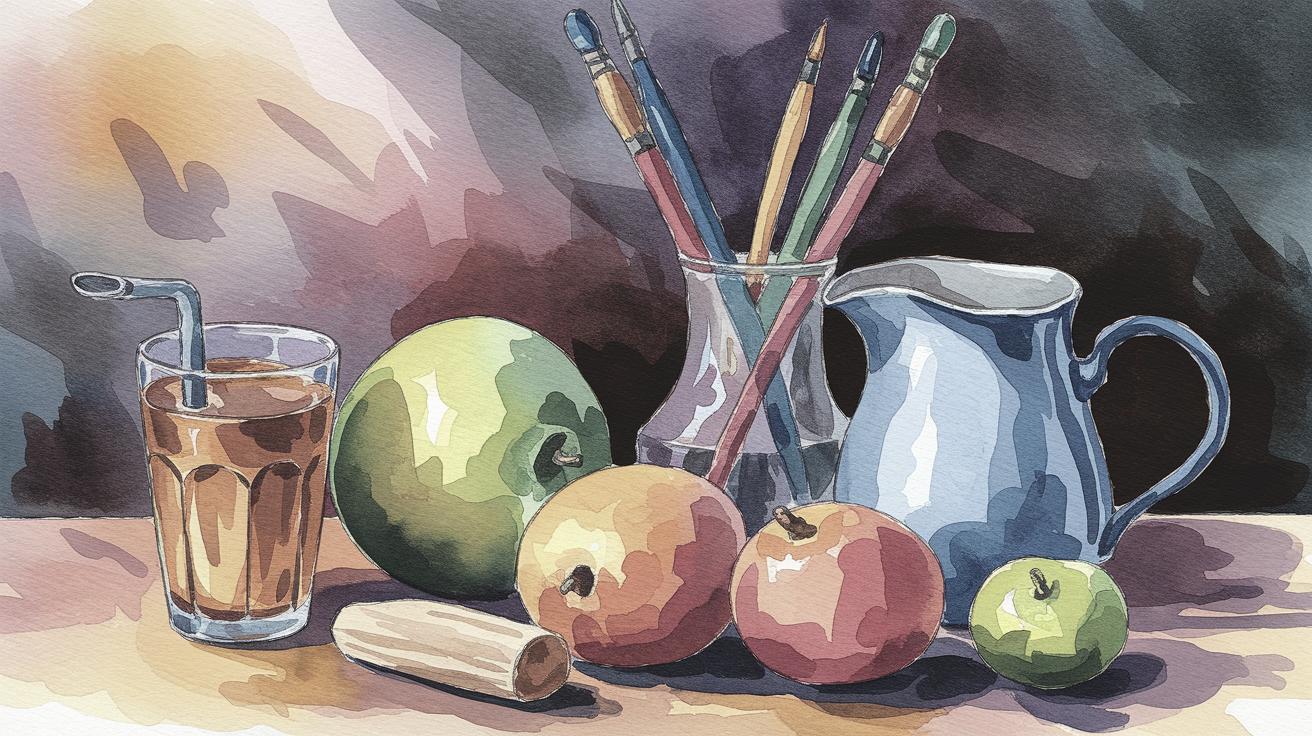Exploring the Art of Watercolor Still Life Painting
Watercolor still life painting is a compelling art form that combines the fluidity and transparency of watercolors with the timeless tradition of still life compositions. This blog post delves into the nuances of watercolor still life, offering imaginative ideas, step-by-step guidance, and highlighting the unique benefits of engaging in this artistic practice. Whether you are an aspiring artist or a seasoned creator, the following exploration will provide valuable insights, techniques, and inspiration to enhance your watercolor still life journey. From understanding the basics to mastering advanced approaches, embark on a creative adventure that celebrates the beauty and versatility of watercolor art.
Watercolor Still Life
Watercolor still life painting is a captivating genre that dates back centuries, celebrating the beauty of everyday objects through delicate brush strokes and vibrant hues. Unlike other forms of painting, watercolor offers a unique translucency that captures light and shadow in a distinct manner. Artists often choose still life subjects because they provide a controlled environment where elements like composition, lighting, and perspective can be manipulated to create a compelling visual narrative.
In watercolor still life, the choice of objects plays a significant role in the overall appeal of the artwork. Artists commonly select items that possess a variety of textures, colors, and shapes to explore the full range of the medium’s capabilities. By focusing on how light interacts with these objects, artists can experiment with different techniques to produce works that are both realistic and expressive. The art form provides a platform for practicing precision and creativity, making it a favorite for both budding and experienced artists.
Watercolor Still Life Ideas
When considering watercolor still life ideas, artists have an abundance of choices at their disposal. Classic arrangements such as fruits, flowers, and kitchenware remain ever-popular due to their simplicity and availability. However, incorporating modern elements like books, fabrics, and technological gadgets can add a contemporary twist to traditional compositions. Mixing and matching different themes allows artists to create unique pieces that resonate with their personal style and artistic vision.
An intriguing approach to watercolor still life is to focus on seasonal themes. Artists can gather objects that reflect the essence of each season, using related colors and textures to accentuate the mood. For instance, autumnal still life might include pumpkins and warm-toned leaves, while a summer-themed piece could feature seashells and vibrant flowers. Embracing the seasons not only creates a sense of time and place but also challenges artists to adapt their palette and techniques accordingly.
Watercolor Still Life Painting Step by Step
How to paint a watercolor still life
The process of painting a watercolor still life begins with the careful selection and arrangement of objects. Artists should take the time to experiment with various compositions, considering how each object’s size, shape, and color harmonize with the others. Once satisfied with the arrangement, sketch the outline of the chosen items lightly with a pencil on watercolor paper, ensuring proportions are accurate and the composition is balanced.
Next, begin the painting process by applying a light wash to establish the base colors and shadows. This initial layer should be light and transparent, setting the groundwork for more detailed work. As the painting progresses, artists can add additional layers to build depth and texture, gradually working towards the desired level of detail. Remember to maintain the luminosity of the watercolors by preserving areas of highlights and reserving the darkest values for shadows and accents.
Here’s a summary of the advantages of still life painting:
Engaging in still life painting offers numerous advantages to artists. Firstly, it provides an opportunity to hone observational skills and develop an eye for detail. By carefully studying the objects in front of them, artists can improve their ability to translate the three-dimensional world onto a two-dimensional plane with accuracy and creativity.
Additionally, still life painting allows artists to practice color theory and composition principles in a focused setting. The controlled environment enables the exploration of various lighting conditions and perspectives, which are crucial skills in all forms of visual art. Furthermore, the repetitive and meditative nature of still life painting can serve as a form of artistic mindfulness, providing a space for artists to express themselves and experiment without the unpredictability of external subjects.
Next Steps
| Section | Summary |
|---|---|
| Watercolor Still Life | Explores the tradition and appeal of watercolor still life painting, highlighting its unique ability to capture light and texture. |
| Watercolor Still Life Ideas | Discusses a variety of themes and objects to inspire creativity, including classic and contemporary compositions. |
| Watercolor Still Life Painting Step by Step | Provides a detailed guide for creating watercolor still life, from planning and sketching to layering and finalizing the artwork. |
| Advantages of Still Life Painting | Summarizes the benefits of still life painting, focusing on skill development, artistic expression, and mindfulness. |
